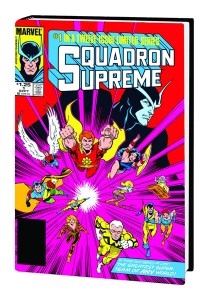

This super categorized juggernaut of information left no stone unturned at Marvel… and it came from a DC brain. For some reason, as I read these new/old JL comics, I recalled the mega-project Gruenwald spearheaded: the Official Handbook of the Marvel Universe. But as the years rolled on and I studied the works of Gruenwald in particular, I grokked his sense of management, his employment of grouping and transparency. What’s a DC person anyway and what does that entail? And how’s it so different from being a Marvel person? Not to be glib but isn’t it all the same? Sure, DC was stuffier & proper and Marvel was gloomier & flawed, but those traits weren’t mutually exclusive, so these unspoken differences always baffled me a little. Known for being one of the leading creative spirits for Marvel Comics in the 80s and a top ranking executive overseer in the 90s, in addition to being a freelance writer during the entirety of his tenure, Mark Gruenwald never hid the fact that he was a DC person.

One name kept bouncing back to me as I read this modestly drawn entertainment: Mark Gruenwald. Everything had its place and function in these bright comics.

As I was picking up what they were laying down, I caught a familiar scent of organization. It was definitely a newfound fondness for the well-behaved, well-groomed do gooders we all know from cartoons and toy lines. I fell in love with a stack of old comics over the holidays and now I understand what being a “DC person” really means. Two underrated workhorses who defined the adventures of the world’s leading superhero group for decades. JUSTICE LEAGUE of AMERICA – A Mike Sekowsky & Dick Dillin appreciation.Character archaeology as expression, especially to pin a moment in time.



 0 kommentar(er)
0 kommentar(er)
